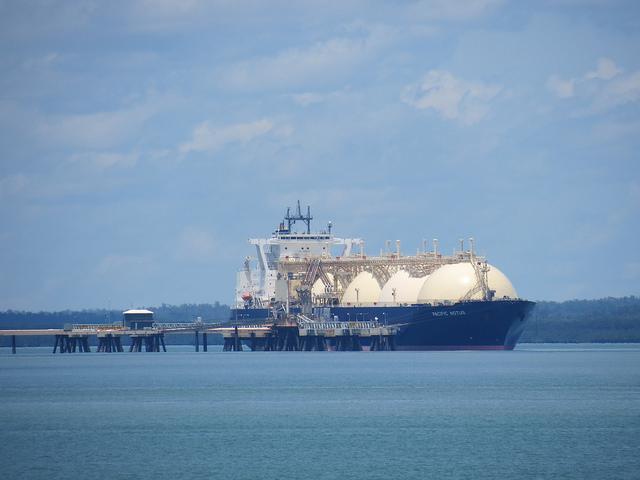
Last year, Australia became the world’s largest exporter of liquefied natural gas (LNG). We’re set to stay that way for a few more years as new projects and exploration are slated for development in the Northern Territory. Demand for natural gas is soaring, especially in our region, so LNG is on its way to becoming one of our most critical exports in the short term.
Darwin’s strategic importance during this industry expansion becomes increasingly clear when we consider that Asia has the world’s fastest growing demand for gas. It’s our closest port to many of those markets.
Our gas exports underpin our relationships with key trading partners. We’re already one of the primary suppliers to the world’s biggest gas importers, such as Japan, China and South Korea; for example, 10% of Japan’s LNG imports pass through the port of Darwin. Unsurprisingly, there’s huge interest in further exploring the Northern Territory’s gas reserves, building infrastructure and expanding production.
While there’s potential for the territory to supply domestic markets, there’s a real opportunity for the federal and territory governments to support gas exports and meet Asian demand. However, we must also consider the long-term implications of exporting gas. Can we continue to rely only on gas as a primary export, and will those exports deliver sustained benefits?
Recent analysis shows that demand for gas will undoubtedly increase over the short and medium terms. Competition in the sector is also set to intensify. The global supply base for LNG is rapidly expanding outside Australia. The US is increasing its production, and new gas projects are being opened in China and Russia. In time, this is likely to challenge Australia’s leading position in the global gas market. While we’re likely to remain a leading exporter of natural gas until the mid-2020s, by then Qatar and the US will probably have dramatically increased their production and market shares.
If we look a little further into the future, demand for gas is set to peak and then plateau by the mid-2030s. Australia should continue to invest in the LNG industry, but our policymakers and the energy industry itself must be more creative and look to diversify in order to secure Australia’s position as a leading and, most importantly, reliable energy partner in our region. This may mean turning to emerging energy-production processes and technologies.
We have a clear economic incentive to do so. Based on modelling by McKinsey, renewable energy sources will account for 25% of fuel needs and more than 50% of power supply globally by 2035. Importantly, key importers of Australian gas have signalled their intent to integrate renewable energy quickly over this period.
Japan has said it will make renewables account for 22–24% of its energy needs by 2030. South Korea plans to nearly quadruple its renewable energy use by then. China will account for a significant portion of global renewables expansion in the coming decade. In Southeast Asia, ASEAN has set a target of 23% renewable energy by 2025.
Since our region will increasingly rely on renewable energy sources in addition to gas, a smart move would be to build Australia’s capacity to supply both. With our vast territory, we can do so. Swathes of northern Australia could be used for producing renewable energy. Being able to transport multiple types of energy through Darwin could cement Australia’s position as an energy superhub of the Indo-Pacific.
For example, hydrogen is likely to play a key role in future global energy consumption. Japan, the biggest importer of Australian LNG, has said that hydrogen will become a mainstream fuel domestically. Luckily, hydrogen supply chains rely on transportation infrastructure similar to that operated by the natural gas industry, such as pipelines and tankers. Current investments in the gas supply chain could, in time, be adapted as demand changes and shifts.
Such agility could make our energy supply more resilient and reliable. While CSIRO has made some progress in developing better methods for transporting hydrogen, more R&D is needed to make this a cost-efficient process.
Australian governments would find another resources boom an enticing prospect. We should invest in our strategically placed northern gas supply infrastructure, but with the long-term aim of using it to diversify our energy supply to include other sources, such as methanol, ammonia, solar and hydrogen. This will strengthen our export capacities in line with upcoming shifts in energy demand.
Setting up the necessary infrastructure and technology will require research and planning. If that doesn’t happen, in a few decades the Northern Territory will find itself unable to enter and compete in established renewable energy markets.
We need to respond to changes in market demand, and those changes are already happening.